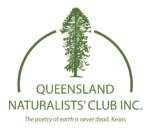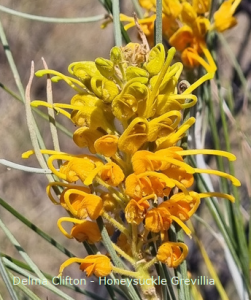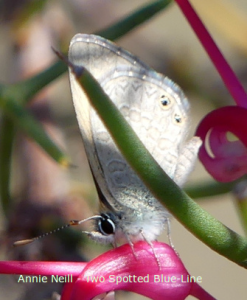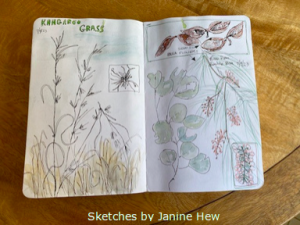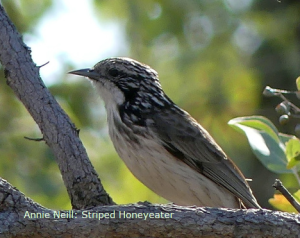
Excursion Report – Long Excursion to Bimblebox Nature Reserve, held 5 to 10 Sept ’23
Bimblebox Nature Refuge is an almost 8000 hectare, 95% uncleared sanctuary in central west Queensland, approximately 500 km west of Rockhampton and 30km north west of the town of Alpha.
It is composed of remnant semi-arid woodlands with an under-storey largely made up of native shrubs, forbs and grasses, and has a rich diversity of birds (176species recorded so far), reptiles and other animals. In May 2011 a flock of endangered Black Throated Finch (Poephila cincta cincta) was sighted on Bimblebox, which has been confirmed by Birds Australia.
Bimblebox is a genuine and rare example of how agricultural production and biodiversity conservation can co-exist. A small herd of beef cattle assist in the control of exotic pasture grasses, and a number of long-term research projects are aimed at generating knowledge and management practices to improve outcomes for biodiversity across the region. Fifteen QNC members were indeed fortunate to be granted access to this precious sanctuary.
To date, we have recorded 385 observations of199 species. Special mention must go to sightings of rufous bettongs (Aepyprymnus rufescens), a first sighting in the wild for many of us.
Greg Neill notes:
On the QNC camp at Bimblebox, I photographed insects that came to our caravan outside light and on 3 nights & set up a light sheet at different locations: 27 species of moths, 5 species of beetles, 5 species of antlions and allies were recorded at the lights.
Amongst the beetles was along skinny brown beetle that at the time reminded me of a click beetle. I uploaded all the images to iNaturalist and this beetle was quickly identified as Synercticus heteromerus, a member of the Conifer Bark Beetles, Family Boridae. What caught my eye was a comment by the identifier “probably first image alive”. This led me to look at the Atlas of Living Australia (ALA) for the records on that site, which has eight records, all preserved specimens, six from 1964, one from 1966 and one from 1979.
The specimen has since been confirmed by Geoff Monteith from Queensland Museum as Synercticus heteromerus. Personal communication with Qld Museum indicates the beetle has had several observations in recent years, but this is the first live record in ALA.
